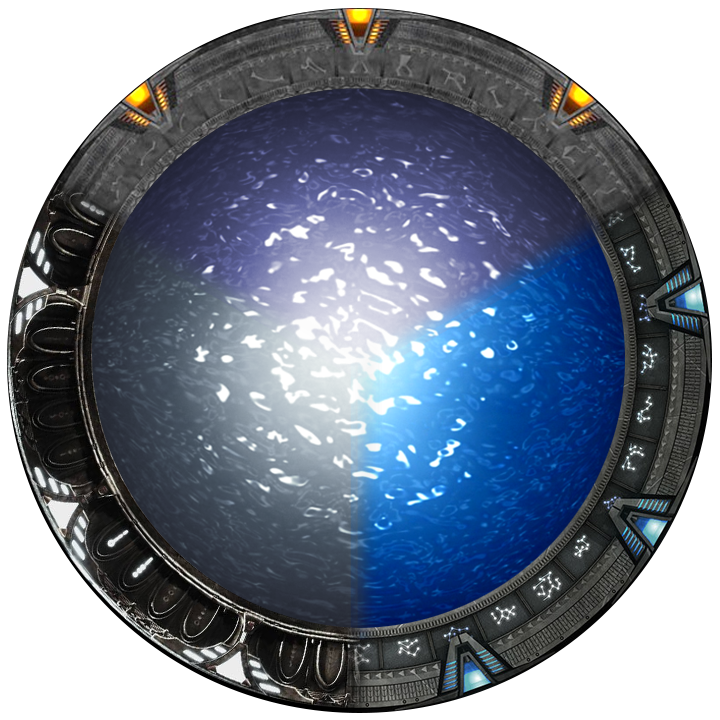This can be anything from Hyperspace in Star Wars, Warp Drive in Star Trek, travel through the Warp in Warhammer 40k or anything else.
I’ve always liked “slow” FTL travel, where going a few light-years still takes a few days or so. I also really like travel through an alternate dimension like in 40k, Event Horizon, Witchspace in Elite Dangerous.
I wanna know your favorite versions, or do you prefer stories that obey the laws of known physics, like the Expanse or Rimworld?
I love the idea that navigators in Dune ripped a line of space cocaine to forsee the best path through folded space for travelling.
Space cocaine is the best take on spice I’ve ever seen.
Challenge accepted

I read all of that in Peter Capaldi’s voice. You made my day
His secretary drinks cat piss??
That’s how the latent poison works in David Lynchs dune
Is this character there in the books?
Thufir Hawat.
In the books he has been poisoned by Harkonnen and needs a regular antidote to survive. The Harkonnen slip it into hid food secretly so if he escapes he will die before he can tell any secrets.
In the Lynch movie he needs to milk a cat rat combo thing daily for the antidote.
🤣 Thufir Hawat milking a cat rat for the antidote sounds hilarious, thank you
Space mushrooms. Worms aren’t a single coherent creature, but are in fact the amalgamation of many microscopic cells. They were once aggregated into sand trout of a few inches, then when they’re ready, they turn into a whole worm. Then if you refine the output of that process, you get spice. The whole process was based around magic mushrooms and LSD.
Yeah they have some crazy complicated formula they use to fold space, but no one knows why it works. They made computers illegal so had to use drugs to make humans capable of doing the calculations. Over time the navigators mutated into worm-like creatures that live in tanks of spice.
I like Dune’s FTL the best of any since it’s not just beep boop… ship goes fast. They can go anywhere in the Universe, but there’s a huge cost to it and shit gets weird.
Infinite Improbably Drive in Douglas Adams’ Hitchhiker’s Guide to the Galaxy.
I find that highly unlikely.
I do love how the side effects (leaking improbability) were critical to the story making any plausible sense.
Throw in bistro-mathematics as an alternative star drive.
It’s such a genius idea because it’s not only a super original way to do FTL, but it also gives you a perfect way out for any plot holes lol
Farnsworth: These are the dark matter engines I invented. They allow my starship to travel between galaxies in mere hours.
Cubert: That’s impossible. You can’t go faster than the speed of light.
Farnsworth: Of course not. That’s why scientists increased the speed of light in 2208.
Doesn’t Cubert later figure out that the engines don’t move the ship, instead they move the universe while the ship remains stationary?
Correct!
I said to my wife that I thought it was more likely that we could change the speed of light than exceed it.
I thought the Expanse did this really well. For starters, most travel is restricted as we currently know it. They have the Epstein drive, but something like that is feasible. In any case, humans are still meat bags that can only accelerate so much.
But then the FTL component requires some otherworldly technology with gating. That leaves the physics mystery to having been built by some smarter species and I think that is perfect for suspension of disbelief.
Most unfortunate name since ISIS in Archer
i see the stargate in expanse, lol.
Going plaid in Spaceballs is pretty dope.
Ludacris speed, go!
Ludicrous speed.
Ludacris is the rapper, but I like your enthusiasm. :)
I just felt he should be included!
Looking forward to round 2 (upcoming Spaceballs movie)
Definitely Warhammer 40k.
I was initially thinking Star Trek but I was also only thinking of how the FTL itself works; it’s based in actual theory which is cool.
But the “travel through hell and risk being haunted by ghosts and demons” thing in WH4k is dope af.
I was thinking of Event Horizon. That’s pretty much the same as you’ve described.
Fun fact: According to the writer, Event Horizon was written as being in the WH4k universe, at the earliest point man was known to cross into the warp. But without the actual licensing to call it Warhammer.
Cool! I have always loved them film. Never knew that fact. I haven’t done Warhammer since a kid but now you say it the gothic style ship interior does remind me of the chaos space marines.
Its heresy that i needed to scroll this long to see 40k!
So I really like the Stargates. They’re a lot more limited/less flexible in where you can travel, but with that limitation comes unique challenges and intriguing stories. The biggest pro about them? It’s the fastest form of FTL there is. You can travel literally instaneously to any other gate. And there are innumerable gates to travel to.
But there are a lot of cons too.
Convenience… gates must already be where you’d like to go. The gates are relatively small, unable to fit even a car through, and the gate has a time limit on holding it open so there is limited ability to send large quantitaties of goods through and absolutely no large objects.
Risk… connections are blind, so you don’t know what’s on the other side until you or a probe goes through and relay back details. And it’s a single point of entry, and only one way, so it’s easy to be trapped or ambushed on the other side without escape. The gate can also be damaged or have its dialing device missing, disabled or destroyed, making it functionally useless from that end. If your gate is dialed into, the only way to stop anyone from traveling through is with a barrier so close to the wormhole event horizon to make molecules unable to materialize. But even then, they can hold your gate open from their end for the time limit of the wormhole, and then immediately redial and prevent you from using it indefinitely.
Unknowns… Certain anomalies like black holes affecting the destination gate can also pose a cataclysmic danger to planet of the gate of origin. Random happenstance with solar flares can cause the wormhole to travel through time as well as space. Gates may be too far to travel without extra power, and there may not be power available on the other side to get back. Gates can be dialed at random or you may have a list of addresses, but without someone who’s been to these gates before, you have no idea who or what you’ll find on the other side until you dial it.
The typical use for the gates is cool, but the really interesting stuff is when things go wrong, or when people get really creative with the mechanics. Things going wrong like heading home to Earth but being gated unexpectedly to an icy cave with no exit and no dial device to be found and everyone having to figure out where you went even though none of it seems to make sense. And creative things like overcoming the gates’ distance limitations/extra power needs to cross between galaxies by daisy chaining hundreds of them in the void between the galaxies and setting up a macro to pass the matter buffer from one to the next without rematerializing the objects and people within in between.
Of course, traditional FTL ships exist in Stargate, but they are much slower than the instantaneous stargates, and have other dangers associated with them, like other armed ftl ships, pirates, replicators… Most ftl ships in stargate use hyperspace travel, but I believe that the Ancient’s inter-galactic stargate seeding ship, Destiny, uses a classic warp drive.
I do love me some Stargate. And Destiny is SUCH A COOL SHIP, I’m still mad about it…
Yeah, I get why it didn’t do a well. It was very tonally different from SG1 and Atlantis. But it was a solid sci fi drama/thriller and had a lot of potential that’ll never come to be. And I love Robert Carlyle in everything. It’s a major bummer.
Was ages ago since i watched it but I remember S1 being pretty bad and I almost gave up on the show. S2 was a lot better and I was disappointed when they cancelled the show. Presumably enough people didn’t like S1 to give S2 a shot
SGU was a good show. But a terrible Stargate show.
apparently the nakai ships in sgu has a different one than destinys, or a normal hyperdrive too. it seems more like catapult like system.
You can definitely fit a car through. In the novels they even transport helicopters and earth moving vehicles to set up military/mining facilities. Think about it, four people can comfortably walk into a Stargate side by side.
You’re right. The stargate is 6 Daniels wide as someone else pointed out. So probably not fitting an F250 through there, but a mid sized suv could pass through assuming there is enough clearance

the ori solve this issue with a supergate. although they have to use black hole to power such a large gate. offscreen atlantis used thier wormhole drive.
Hold my beer
thats why sg1,sga, sgu had the foresight of using probes, so they wouldnt be ambushed, they rarely are. the biggest limitation for a gate is how long it can stay open, unless you have unlimted power sorce, like black hole or zpms, or anubis gate destroying device.
ori solves this issue by using a supergate powered by a small blackhole, can be a natural one too. asgard solely use thier very fast intergalatic hyperdrives, so they dont need stagates all the time. aside from the zpm power atlantis, they can fly across the galaxy in a matter of minutes or seconds. while even the deadalus takes some time because its a weaker powered ship.
What annoys me about the SG universe is how inconsistent the gate addresses are.
They talk about how every gate address in the Milky Way is made up of five coordinates and the sixth glyph is the point of origin.
I am sorry but that sounds smart but is actually dumb.
I love SG1/SGA, but once you start thinking about it, it get annoying.
Ok, so the it is established that the last glyph in the address is the point of origin.
This makes me wonder why the address system is needed at all.
Think about it, if every planet has a different glyph as a point of origin, why not just use that glyph as the entire address?
In Children of the Gods, Til’q asks SG1 where they come from and Daniel draws the Å symbol, which Til’q recognizes, meaning that the Å symbol is only connected to earth.
So ever since then, it was established that a single glyph can be understood as a single planet. So why not use it as the actual address for a specific planet,
the other 6 points are coordinates to basically zero in to the planet your dialing, i think its explained more in the first few season, gotta rewatch the first few seasons where carter explains why they use 6 other costellation, and the "planet your own unique symbol is probably the constellation unique to that part of the space. the pegasus is this way too, but the SGU ones is based on a different system
What I like about FTL is how it works with the story.
My favourite examples are Elite Dangerous and Dune.
Elite Dangerous’s FTL tech is based on alien tech and that allows the developers to do cool stuff that you wouldn’t expect in an mmo (this is usually a loading screen so when this first started happening people were terrified).
And Dune’s idea of having the entirety of interstellar civilisation dependent on one substance that can only be made on one planet, which also has other uses extremely important to different groups, sets the stage perfectly for what happens in the books.
Wish they didn’t bail on consoles.
Allister Reynolds: Revelation Space universe. Its not FTL its near light speed with time dilation as an actual plot device. The only hand waving part is the power/device to get up to speed, but everything else is in the realm of physics.
I love his books.
Also love how (minor spoilers for Redemption Ark follow) FTL travel is possible in the universe, just so hard to do that if you get it wrong you’re lucky if it only blows up, rather than fucking with causality to the point where you never existed
Not only was it incredibly difficult (required sacrificing actual human minds for the calculations) and insanely dangerous (like that one tech who was at the wrong place and time of an FTL anomaly and every particle in their body vanished from all points in space/time), but the actual gain over lightspeed was only like 1% (the FTL ship was traveling at 101% light speed, chasing a LightHugger traveling at 99% light speed).
I hope Revelation Space gets made into a show one day, with spin-off movies (Diamond Dogs for example) and webisodes (daily life of an Ultra).
in the various series and different shows, they have some kind warp field in trek, that prevents them from being torn apart going ftl, its the same with hyperspace in sg1, theres a field surrounding as a shell of the ship to achieve the same thing.
sg1 used such a thing , hyperspace field to escape a nebula for different reasons.
You just reminded me of the bit where they discover that fucking with causality is BAD.
spoiler
The poor scientist who is the only one who remembers their friend existed. As well as the lead who is left wondering how many scientists he accidentally killed.
Stargate is pretty good. Rotary phone 😀. It’s an elegant way to minimize CGI costs for the show. Not only that, the concept that you don’t know what’s on the other side is also interesting.
Chevron 7 locked.
I was just watching that, it’s still one of my favorite shows.
Admittedly the “don’t know what’s on the other side” bit is a little iffy. Sure, they’ve got that little wheeled robot they use a couple of times, but after a while you’d think they’d do something as simple as “stick a camera on a pole through the gate first.”
This is covered in the technobabble of the show. The gate is one way to anything bigger than radio waves, so the camera would see nothing until enough of it had dematerialized for the rest to be sucked through.
The camera wouldn’t emerge through the other side until the whole pole is through though, the Stargates only pass matter to the other end once the full object has entered.
As others have explained, this is covered, the Stargate creates a minuscule wormhole, all matter is disintegrated transported and then reintegrated. But the Stargate acts in continuous chuncks of matter, so the camera won’t rematerializes until the entire stick crosses the event horizon, so you would need to attach the camera to a remotely controlled car, and you’re back to the robot.
They had hyperdrives too but they were pretty boring in comparison.
In the Commonwealth Saga it’s trains! It’s portals with hugely demanding power consumption. They mostly have to stay fixed to one place and open. So they run choo choos. Their world is commerce and economics. And trains are a lovely symbol of that.
In The Final Architecture it’s jaunty. Unspace helps you go fast but you are always alone. Crewmates gone. When you come out they reappear. When you inside there is something coming to get you. Something that lives in unspace and doesn’t like that we use it for travel. The terror of its hunting you drives everyone to suicide. So instead they sleep. Magic “you sleep now” pods for everyone.
Except. You can only sleep if you are on a known route. Some rare people can feel out new routes. And they have to say awake. Most shows just follow normal routes. But the special ships with these other folks can go all over the place! At the cost of route terror.
The books are about coming together in the face of adversity cosmic horror. And unspace is a foil to that. You are alone. But we do what we can anyway. Your alone now, but not forever. Unless the monster gets you.
The Commonwealth Saga is so great.
The portals / train system brings the vibes of the commonwealth up to something like the EU, but on a multi-planetary scale. You have to go through specific points to get planet to planet but the infrastructure is so built up that it’s mostly a travel time problem. It becomes an issue later on that the society has gotten kind of hidebound into a gradual expansion so they never really ‘needed’ FTL for exploration, and now they do.
I get US robber baron vibes too.
Fair warning for those who decide to read it, the book doesn’t treat women particularly well. And it’s the best propaganda I’ve read for capitalism. Read it with eyes open and it’s fun. Great villains. Fun world building. It ends well. And trains!
And it’s like a 1000 page long novel split into two books.
And it has some of the most “alien” aliens in any book I’ve read.
In the Battletech universe, the Kearny-Fuschida drive jumps a ship instantly up to 30 light years, but then the jumpship needs to deploy a huge solar sail and wait two weeks to charge the capacitors. They also can’t jump (safely) except to the low-gravity Lagrange points, and then dropships need to detach and make their way to the planet or whatever.
It’s such that, for an individual booking passage, you’ll spend a week or more on a dropship, half accelerating, half decelerating towards the jumpship, dock, the “jump” is experienced as an unpleasant and disorienting few seconds, and then your dropship undocks and spends another week in flight to another planet.
It’s not the lagrange points; the whole thing about a lagrange point is the significant effects of gravity. It has to be anywhere outside a significant gravity well, typically they use far above/below the ecliptic plane, though if calculated carefully you can get a lot closer into the system.
Or, if you’re Jaime Wolf, you can just jump into low orbit over Luthien “Inside the orbit of our closest moon.” Happens in the second or third book in the Blood Of Kerensky trilogy.
Oh, and further points for Hyper Pulse Generators. So many sci-fi shows depict “supspace radios” or whatever that just let them communicate at whatever bandwidth they want in real time; Captain Picard can just Skype Starfleet Command whenever he wants. In the Battletech universe, the only real stable currency, the C-Bill, is backed by HPG transmitter time. Bandwidth and speed of communication is built into the setting in a way it just isn’t in other franchises.
deploy a huge solar sail and wait two weeks to charge the capacitors.
The one exception are JumpShips (usually WarShips) with Lithium-Fusion batteries, which allow for a second jump without the recharge time. Those are functionally extinct in the Inner Sphere outside of Comstar, though.
Or if there’s an intact Star League-era charging station.
My favourite is definitely BSG (
Big Sexy GiantBattlestar Galactica) where the big ships just go ‘poof’ in a flash of light and suddenly they’re somewhere else. Pure kino. :3The rescue where they jump the Galactica into the atmosphere of New Caprica, scramble Vipers, and then jump out again is maybe the coolest scene in TV sci-fi.
I CAN’T BELIEVE I FORGOT ABOUT THAT.
That literally made my day, thanks lolol. THE KINO IS ABSOLUTE
The setup is just perfect too. “All hands - brace for turbulence.”
And you’re thinking, No. No way he’s going to do that.
AND THEN HE DOES.
I think it worked so well because they’d spent two or three seasons not doing that.
I also loved that, as soon as they did that, the Galactica started falling
I just rewatched BSG a month ago or so, and yeah, that scene was so insanely cool!
it is kinda wierd the showrunners of the reimagined series tried to avoid building a lore around or the scifi-babble around it. they wanted people to focus on the “christian themed, end of times arc of the series” thats why they avoid the previous series of bsg tech. there isnt much info how they developed it in bsg.
I’ve never seen the original series but I really enjoyed how they downplayed technology in general. I could have done without so much of the god shit, but really the show was so damn good that I can deal with that part
from what ive heard, the criticism is about the showrunner, who is allegedly a mormon, so he wants a GOD-ANGEL-christian ending, similar to supernatural show, god-christian angel, ending. except with all the magic/ and advanced technology of the older series of bsg. thats why it deviated from the og show so mmuch, no lasers, no advanced 3rd race in teh universe.
also he dint like the “pewpew” scifi-tech of TREK-CLONE thats why. the original series had way more material to be honest, instead of the stuck in a ship, Voyager-esque show.
like how the older basestars are more harder to destroy than the new ones, yea they give an explanation its easier to build/grow. another plothole i dint like 40 years, and the 7 dint figure out how resurrection tech works, so they werntly left crippled if the hub was destroyed.
Here here! I second that!
Also, my favorite line in that clip “Well, this oughta be different…”
I enjoyed reading Ursula Le Guin’s stories about instantaneous travel.
The process of instantaneous travel is so bizarre and unexplainable that every crew member experiences it differently. Some people think they haven’t gone anywhere, some people think they’re on the other side of the universe, and some people think the ship has disintegrated around them.
The only way for the process to succeed is for the entire crew to agree on a shared reality. It has the effect of making FTL travel a dangerous thing that requires training and planning. You can’t hop on a ship with random people and expect to survive. Everyone has to train together to really trust each other’s perception and experiences.
What story was this?
I think it’s called Shobie Story. It’s part of Fisherman on an Inland Sea.
I like the A Fire Upon The Deep version where Earth is in the “slow zone” but the speed limit gets faster in other regions of space. It makes enough sense that you could easily imagine a universe working that way, at least if you don’t know too much about physics.
That book was a fun read.






















